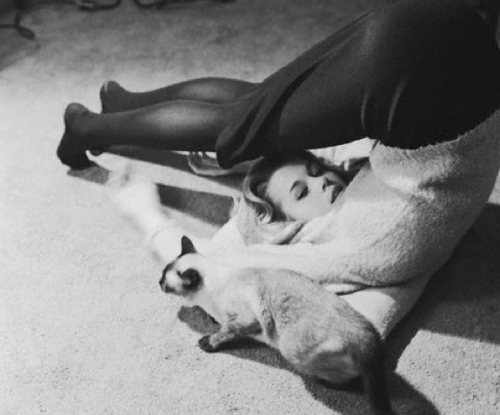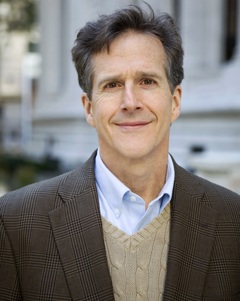How William J. Broad became yoga’s public enemy number one: An interview
"How Yoga Can Wreck Your Body" set off a firestorm of controversy. We asked the author to explain himself and how it feels to be hated in the yoga world.

In January, William J. Broad’s New York Times article entitled “How Yoga Can Wreck Your Body” set off a firestorm of controversy in the yoga world. It was a chapter adapted from his recent book, The Science of Yoga: The Risks and the Rewards, which hadn’t launched at the time. And a publicity stunt extraordinaire.
After reading his book, we caught up with the award-winning science writer (and longtime yoga devotee) to ask him about why he made the decisions he did and how it feels to be yoga’s public enemy number one.
Check back on Monday, when we ask Broad about the subsequent reactions to his John Friend yoga scandal story, and his thoughts on the future of yoga. —Lisa Elaine Held
At this point, the yoga world is just plain angry with you. A San Francisco Chronicle reporter summed it up with this: “I do not know why the New York Times dislikes yoga so much.” How do you respond to that, especially as a longtime yoga practitioner?I’m sorry that people feel that way, and that’s certainly not the impression I want to leave. I personally love yoga, but I’ve received lots of letters from people with injuries and I’ve talked to women who have been victimized by philandering gurus.
The whole epilogue of my book goes on about about how this is the beginning of a bright new age for yoga. But for yoga to grow up and be the incredible discipline it is, it has to be accountable. It has to have normal feedback mechanisms and have the objectivity of science and the reflection of self-scrutiny. If it doesn’t, it will just keep fracturing into competing styles and making more claims. And the claims are getting worse and worse because there are billions of dollars at stake.
As a science writer who’s generally covered subjects like nuclear proliferation, how was the process of researching and writing about yoga different?Wow. It was harder in many respects. A lot of nuclear and germ warfare stuff is secret, but the scientific literature on yoga was quite diffuse, and in many cases it was contradictory. Bombs come down to physics, which can be more precise. The yoga science was spread out, across different countries and individuals. It took me much much longer to research than I thought. My plan was to do it in 9 months; it took five years.
Your goal, in the book, is to focus a scientific lens on yoga, to counter the haze of misinformation that surrounds it. Aren’t there limits on what science can say about a spiritual practice like yoga?That’s part of it, but yoga also makes thousands of claims that are open to empirical inquiry, like yoga will help you lose weight or make you feel great. The thing that was the most daunting, and this gets into the weeds a little, but yoga science doesn’t have any big patrons. There are no drug companies or governments spending billions on yoga studies. Most of the science is done by researchers who have a personal interest and have to scrape the money together, so the studies tend to be small and often not great in terms of their quality.
The book looks at the risks that have been identified, such as injury, and at yoga’s incredible benefits, like lifting mood, improving sex lives, and injury rehabilitation. Why excerpt the chapter that focused primarily on injury? Was that your decision or one made by the Times?It was totally the decision of the magazine editors. They looked at the book, and that’s what they picked. I never saw the web headline (“How yoga can wreck your body”) until it appeared online. I was still comfortable with it though—it’s a good, racy headline. Judging from the response, I think their choice was excellent. I knew it was an issue, but I had no idea how huge it was.
And the vast majority of the responses were positive. They came from teachers, former teachers, studio owners, you name it, and even more surprising were all of the injury horror stories that people started sending.
Okay, but one of the most common criticisms of the excerpt is that you didn’t compare the rates of injury to other physical activities and that the number of injuries was so small that it was overblown.I know. People say, these injuries are similar to sports injuries or injuries you get from any physical activity, and I go, ‘Really? Strokes? Parts of your brain dying? People dying from strokes?’ This type of stroke kills about one in twenty people—they’re one of the most serious injuries you can suffer, and they’re not associated with running, or even football, which does have a record of brain injuries.
Also, that goes to the issue of, who funds yoga? Who is going to pay millions of dollars to figure out what the baseline rate of yoga strokes is and then compare it to other fields? Those studies have never been done. I think that’s a fine criticism, and I would love to see that data, but it doesn’t exist.
Here’s what I know: These things are real. I don’t want to hype it because, yes, the numbers are small. But the consequences are extraordinarily high. I don’t do shoulder stand or plow anymore—I avoid poses that stress the neck, because I’ve seen what can happen.
We want to know your thoughts and comments, below!
Check back on Monday for our interview with Broad about his John Friend yoga scandal story.
Sign Up for Our Daily Newsletter
Get all the latest in wellness, trends, food, fitness, beauty, and more delivered right to your inbox.
Got it, you've been added to our email list.











